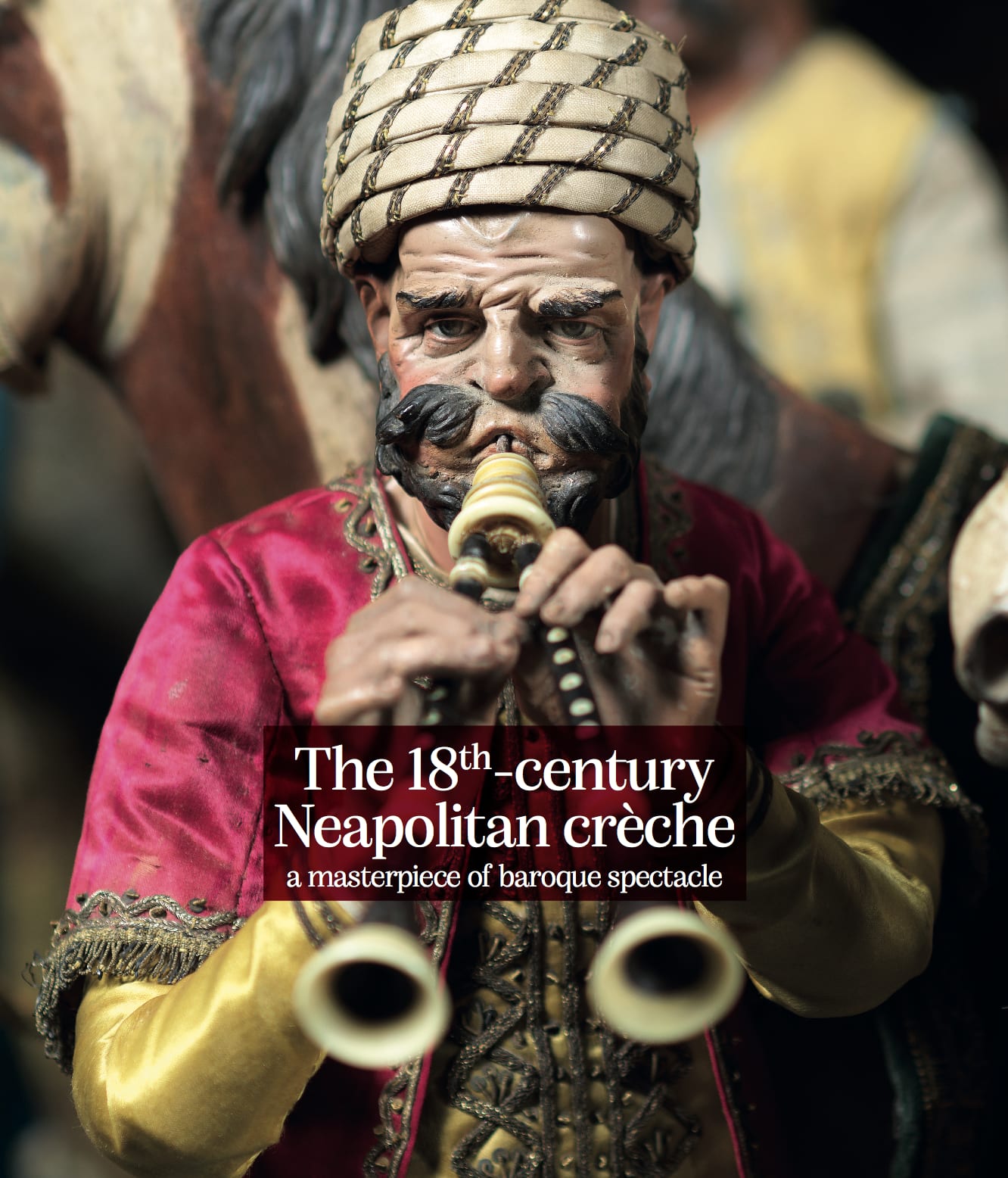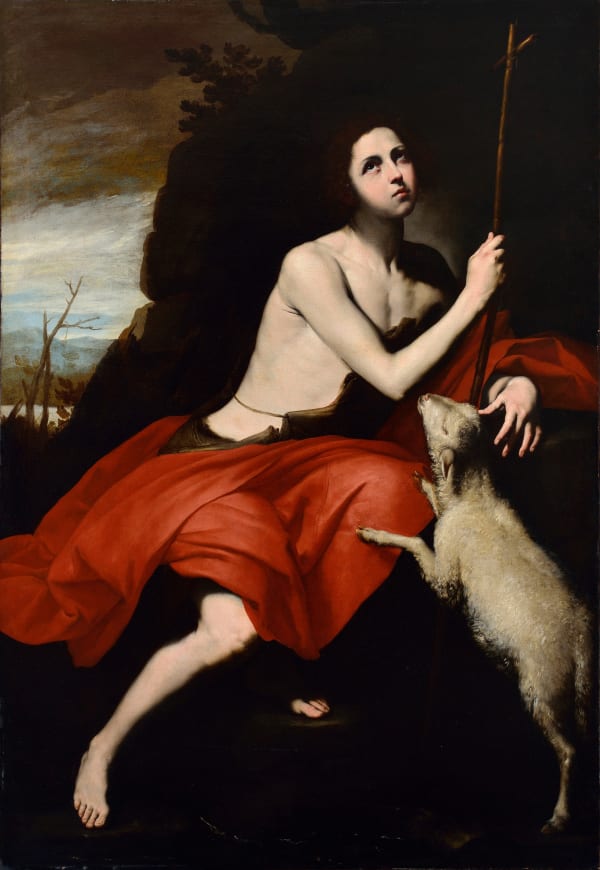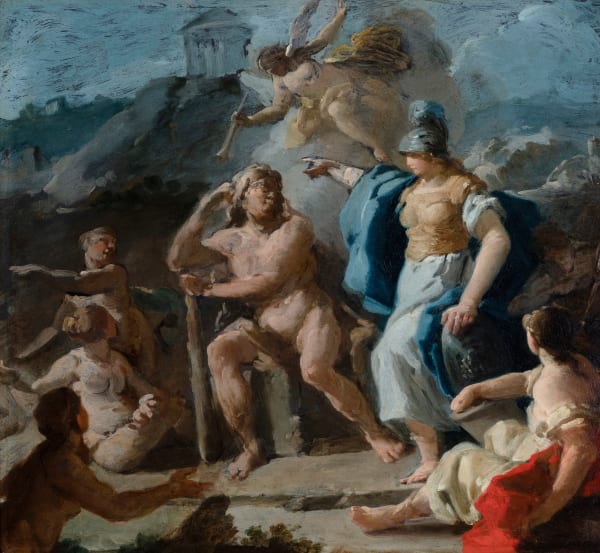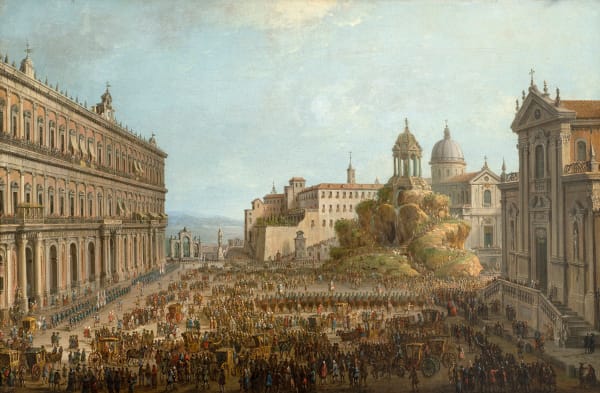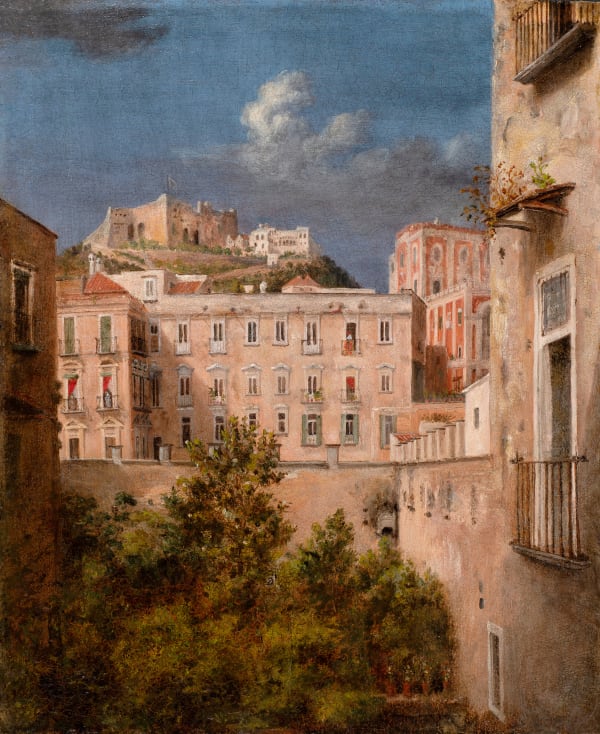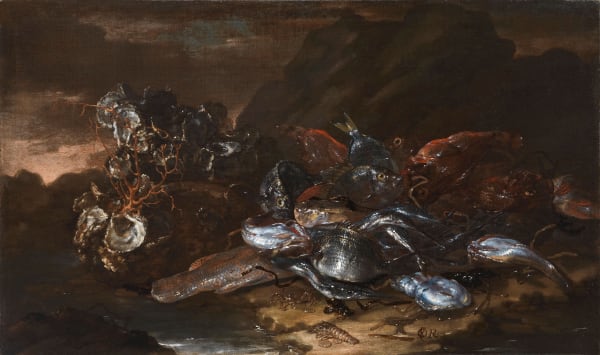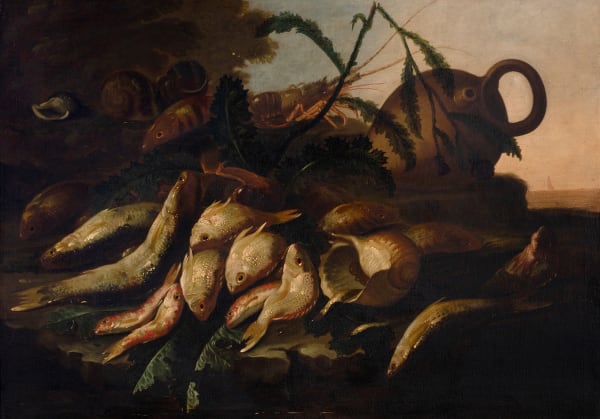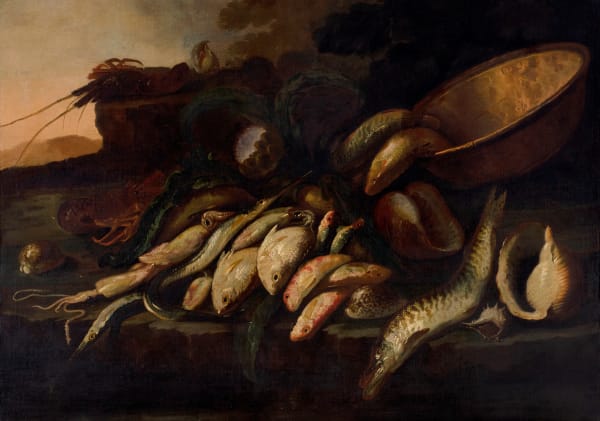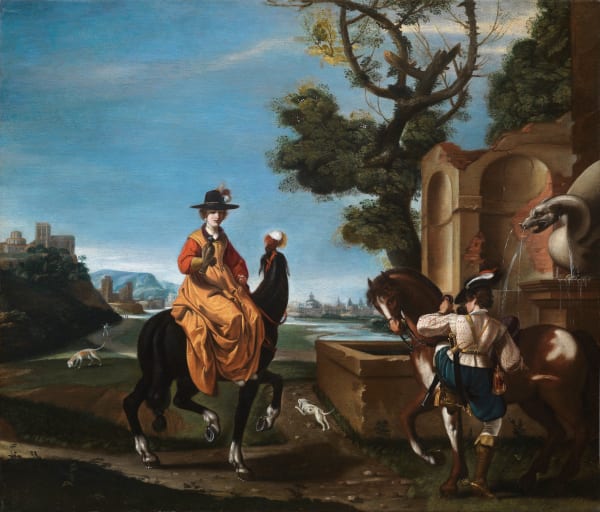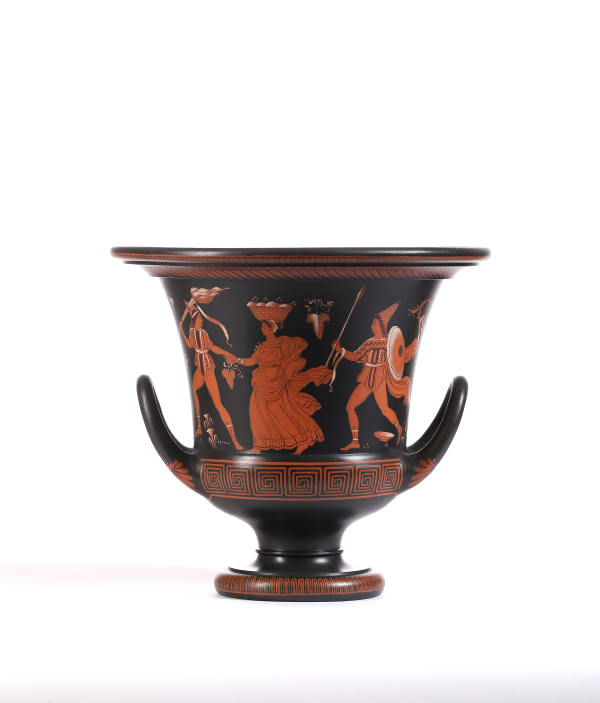-
Introduction
Colnaghi is delighted to present a special exhibition showcasing the enduring creative legacy of Old Master artists and artisans from Naples.As the centrepiece of NAPLES Colnaghi will present a magnificent 18th-century crèche, known in Italian as a presepe, a monumental Nativity scene traditional to Baroque Naples. Boldly transgressing artistic hierarchies, presepi unite different media and techniques to realise extraordinarily elaborate and exuberant Nativity scenes that provide incredible glimpses into life in Naples at the time. Our presepe, created during the golden age of these works, is one of the most important examples outside Italy and reflects all the vitality and craftsmanship for which the Italian city is still known. The exhibition will also feature a selection of religious, landscape and still-life paintings by some of the greatest artists who worked in the city during the 17th and 18th centuries, many of whom served as inspiration for the craftsmen of the presepe, including Jusepe de Ribera, Luca Giordano, and Massimo Stanzione.NAPLES will be on view at Colnaghi from 3 December 2021 through the festive season, until 25 February 2022. -
THE TRADITION OF THE NEAPOLITAN PRESEPE
The creation of Nativity scenes with modelled figures and animals during the Christmas period was widespread throughout Italy in the 13th and 14th centuries. By the 18thcentury, what originally had been a relatively simple temporary tableaux underwent a transformation in Naples into highly dramatic and theatrical creations, often monumental in scale. These crèches combined traditional sacred elements of Nativity scenes—the Holy Family, wise men, angels and shepherds—with aspects of contemporary Neapolitan life—rowdy tavern scenes, processing musicians and bawdy market shopkeepers—in dazzling displays of artistic techniques.The presepe at Colnaghi, dating from the mid-18th century to early-nineteenth century, is one of the very few and finest of these masterpieces of the Italian Baroque outside Naples. Crafted from oil painted terracotta, carved wood, painted glass, shaped wire, tin and cork, with stitched silks and linen to recreate the detailed fashions of the time, the presepe stages the sacred scene in a true-to-life Neapolitan setting and measures a remarkable 288 x 440 x 274 cm in scale. -
Join renowned scholar of 18th-century Neapolitan art, Carmine Romano, as we explore the history and craftsmanship of this wonderful Neapolitan crèche, also known as a presepe. This monumental Nativity scene is traditional to Baroque Naples. Displayed in a custom-made wooden cabinet which has a built-in lighting system simulating sunset and sunrise, the presepe restages the Nativity in an utterly engaging and sensory manner. Bringing together classical and Christian mythology with the traditional folk culture of every-day Naples, in a 'polysemic installation' that roots the narrative in reality, this highly ornate, large-scale scene consists of 421 items in total, including religious and secular figures, putti and seraphims, animals, objects such as food and drink, and pieces of furniture. It forms the heart of our NAPLES exhibition, on view at #ColnaghiLondon until 25 February 2022. Stay tuned to learn more. #Colnaghi1760
-
The Influence of Caravaggio
It is difficult to overstate the influence of Caravaggio on Neapolitan painting in the 17thcentury. Though active in Rome for most of his career, Caravaggio was exiled from the city for having killed Ranuccio Tommasoni, a notorious figure from a wealthy family. As a result, he spent considerable time in Naples during the last four years of his life: 1606 – 1610. The works included here by Jusepe de Ribera, Massimo Stanzione, Mattia Preti and The Master of the Annunciation to the Shepherds all bear the hallmarks of Caravaggio’s style, including the use of intense chiaroscuro and realism.
-
-
The Neapolitan Baroque
Painting in Naples throughout the Baroque period was characterized by powerful, grandiose compositions that counteracted Caravaggio’s earlier predilection for naturalism. This notion is evidenced by the monumental canvases included below by Cesare Fracanzano and Luca Giordano, which are just as theatrical in their design as they are in their size. Though smaller in scale, the oil on slate by Domenico Mondo is jewel-like in tone, while the artist’s use of bravura brushstrokes further enhance the painting’s eye-catching quality.
-
-
The Vedute Tradition
The heyday of Neapolitan topographical view painting was the eighteenth-century, when Antonio Joli was commissioned to execute a series of views of the city and its environs in the 1750s for the English grand tourist Lord Brudenell. Two of these, loaned by Lord Montagu of Beaulieu - The Palazzo Reale and Castel Nuovo and Naples, A Festival with a Cuccagna at the Largo di Palazzo are among the exhibition’s highlights, reflecting both the earlier influence of Gaspar van Wittel (Vanvitelli) and of Canaletto, while providing intimate glimpses of the city and its inhabitants. Also included are two fascinating views of Vesuvius by Pietro Antoniani and Pascale Mattej, which capture the drama of the erupting volcano.
During the early nineteenth century Naples continued to be a fertile source of inspiration for vedute artists. This is demonstrated by Maria Lushington’s delightfully informal View up to Castel Sant’ Elmo executed in oil on paper and Edward William Cooke’s painting of Vesuvius seen framed by the doorway of a fisherman’s hut: a charmingly low-key picture showing the mighty volcano slumbering in the distance.
-
-
Still Lifes
Still life painting in Naples flourished during the latter half of the 17thcentury and the early 18thcentury. This was largely thanks to the influence of Caravaggio, who had stated that executing a high-quality flower piece required as much effort as a figure subject, thus helping to do away with previous conceptions about the still life genre. Luca Forte (c. 1615 – c. 1670) was one of the first Neapolitan artists to adopt Caravaggesque naturalism in his flower paintings, and was soon followed by Paolo Porpora, the Recco brothers, and Giuseppe Recco's daughter Elena Recco, all of whose paintings can be explored below.
-
-
Neapolitan Society
The present exhibition offers revealing glimpses of the city’s inhabitants as well as the townscapes of Naples. This is seen in the lively porcelain figures which include an astonishingly Hogarthian Capodimonte group of a lecherous old man and a woman with her daughter by Giuseppe Gricci, the factory’s greatest modeler. This group contrasts with the four elegant strolling figures from the 1790s produced by the Real Fabbrica and a rare Doccia figure of a Turk, which has obvious parallels with some of the oriental figures in the presepe. These themes can also be observed in the Neapolitan paintings on display, such as Gaspare Traversi’s The Sewing Lesson - a wonderfully observed bourgeois interior of the 1740s.
-
-
Naples and Antiquity
In the eighteenth century, Naples became an increasingly important destination for antiquarian travellers thanks to the rediscoveries of Pompeii and Herculaneum in the 1730s and 1740s, and of the Greek temples at Paestum. The city's status was further enhanced by the transfer of the great Farnese collection of antiquities to Naples, including the famous Farnese Hercules, one of the most famous statues of antiquity. Naples was situated in a part of Italy which had been a Greek colony, and was therefore particularly rich in Greek artefacts, above all vases, which were avidly collected by the British Envoy, Sir William Hamilton, and later enriched the British Museum. The sumptuous 4-volume catalogue of his collection, which inspired Wedgwood’s basalt-ware copies as well as Robert Adam’s Etruscan Room at Osterley, is one of the highlights of the present exhibition. Learn more about the significance of a beautiful marble statue, visible in a niche in the lower right quadrant of the presepe. This statue represents Asclepius, a Graeco-Roman god of healing and medicine.
-
-
">
Virtual Reality Tour


